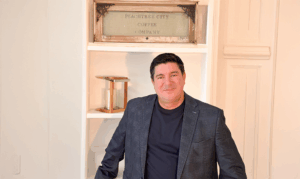We erect monuments to remind posterity of what we believe to be important. We normally (but not always) place these monuments on public lands, and maintain them at public expense.
Many people, including Bonnie Willis, ask the questions: Why are people now protesting the presence of monuments erected to honor the military and political leaders of the Confederacy. Why was there no outcry at the time the monuments were placed on public lands? Why are people seeking to destroy history? How will this help the people doing the protesting? And is nothing safe and sacred anymore? Will we have to remove mention of slave-owning founding fathers, like Washington, Jefferson, and Madison?
Obviously Mrs. Willis has made her peace with the notion that the South is different, and that honoring the Confederacy is all a harmless part of the Southern mystique.
What’s missing is any sort of acknowledgement that these people fought to preserve slavery on this continent. Period. And the housing and maintaining of monuments designed to honor people who are famous only because they fought very hard to keep the ancestors of a significant portion of the American population in perpetual bondage advances the idea that the fight is more important than the transgression.
Undoubtedly we’ll hear from the flat earthers next week that the war was fought for many reasons and that slavery had nothing to do with it. We all know these reasons because they’re a rehash of the endless self-justifications written by Jefferson Davis, Alexander Stephens, and their ilk after the South was defeated on the battlefield.
People did in fact protest these monuments, most of which were erected while the Southern states were denying equal rights to their African American citizens (in other words, following Reconstruction). The threat of lynching might have put off more than one monuments protest at the time. The fact is, these monuments paled in importance to eliminating poll taxes and literacy tests and being able to register to vote, all part of the Civil Rights movement in the 1960s.
We could just call it a day and ignore the entire contrived story that these people fought for “states rights” and that slavery had nothing to do with it. Or we can consider this one more step in setting the record straight. This is not destroying history, but correcting history.
And further more we are not condemning anyone by removing statues and monuments on public property. If Mrs. Willis wants to erect a statue of Africans selling other Africans into slavery, she can place it on her own property if zoning allows. She might also explain that Africans saw slavery in a different light, but that is historical nuance.
Will the removal of these monuments help a single black child? I don’t know, and it doesn’t matter. The child will at least not have to face their ancestor’s persecutor, erected in bronze, and standing on public land at their expense.
And there’s one more thing. We can and should draw distinctions between slave-owning Founding Fathers of the republic, and political and military leaders of the Confederacy. The former were born into an aristocracy that generally recognized the evils of slavery and believed it to be nearing extinction. The latter fought specifically to protect the institution of slavery from people who wanted it abolished.
They were not evil. By and large they were enormously brave. But they were on the wrong side of history, and their accomplishments and sins ought to be displayed in museums where they belong, not in public squares financed and maintained at public expense.
Timothy J. Parker
Peachtree City, Ga.









Leave a Comment
You must be logged in to post a comment.